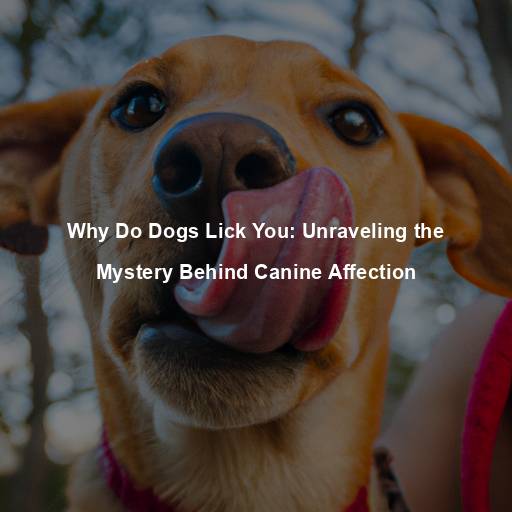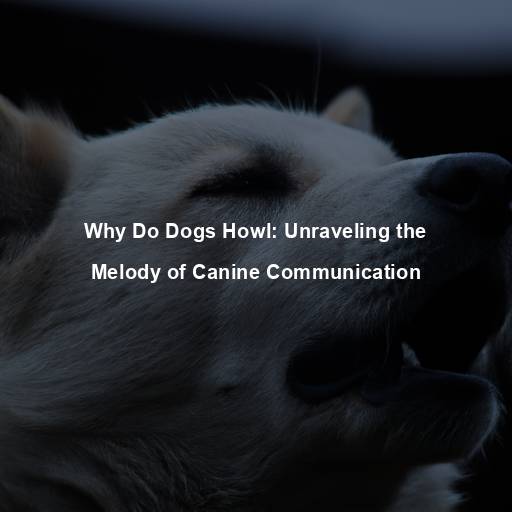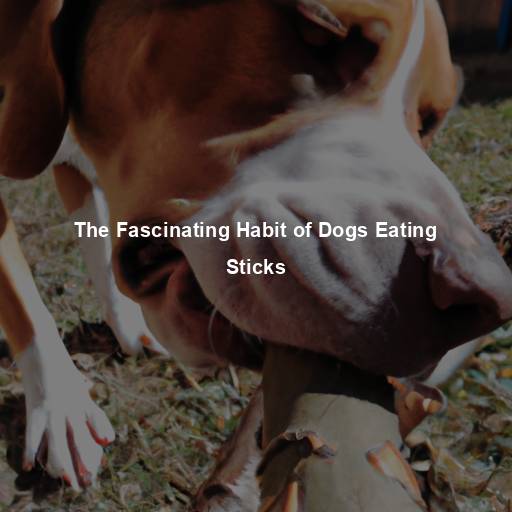Can Dogs Eat Chocolate? Debunking the Myth and Understanding the Risks
Last Updated on October 24, 2023 by Evan
Contents [hide]
- 1 Understanding the Fascination with Chocolate for Dogs
- 2 Common Symptoms of Chocolate Toxicity in Dogs
- 3 The Importance of Prompt Action
- 4 Prevention is Key: Keeping Your Dog Safe
- 4.1 Educate Yourself and Others
- 4.2 Securely Store Chocolate
- 4.3 Offer Safe Alternatives
- 4.4 Supervise Your Dog
- 4.5 Consider Dog-Safe Celebrations
- 4.6 Small Breeds and Chocolate Toxicity
- 4.7 Large Breeds and Chocolate Consumption
- 4.8 Puppies and Chocolate: Increased Vulnerability
- 4.9 Health Conditions and Chocolate Sensitivity
- 5 Common Misconceptions About Dogs and Chocolate
- 6 Seeking Veterinary Care: When to Be Concerned
- 7 Understanding the Impact of Chocolate on Different Dog Breeds
- 8 Final Thoughts: Keeping Your Dog Safe and Healthy
- 9 FAQs – What dogs can eat chocolate?
Understanding the Fascination with Chocolate for Dogs
For centuries, chocolate has been a delight cherished by us, humans. However, it’s disheartening to unveil the perplexing truth that this beloved treat poses an alarming concern for our furry companions. As devoted dog owners, it becomes imperative for us to unwrap the layers of misconception surrounding dogs and chocolate, as we delve into the intricate web of risks entangled within. Buckle up, as this eye-opening article aims to navigate you through the treacherous terrain of chocolate and its potential perils, equipping you with vital knowledge to ensure the safety and wellbeing of your precious four-legged friends.
The Chemistry Behind Chocolate Toxicity
Chocolate contains a compound called theobromine, which belongs to a class of chemicals known as methylxanthines. While humans can metabolize theobromine efficiently, dogs process it much more slowly, leaving them vulnerable to its toxic effects. Theobromine acts as a stimulant, affecting the central nervous system and cardiovascular system in dogs.
Determining the Toxicity Level
Theobromine levels vary in different types of chocolate. Dark chocolate contains the highest concentration, followed by milk chocolate and white chocolate, which has the least amount. The toxic dose of theobromine for dogs depends on their size, weight, and the type of chocolate consumed. Even a small amount of chocolate can lead to severe health complications in dogs.
Common Symptoms of Chocolate Toxicity in Dogs
Understanding the indicators of chocolate toxicity in dogs is absolutely crucial. Should your furry companion happen to consume chocolate, there are several telltale signs to be vigilant for. Be aware of any potential symptoms your dog may exhibit, as they could range from mild to severe perplexities.
Vomiting and Diarrhea
Discover the hidden dangers of indulging your precious pooch in the guilty pleasure of chocolate, as this delightful treat may spell gastrointestinal turmoil for your furry friend, leaving them tangled in a web of perplexing symptoms such as uncontrollable vomiting and troubling diarrhea. To ensure the well-being of your loyal companion, it is imperative to act swiftly and secure the necessary veterinary attention, unleashing a torrent of relief from their bewildering ordeal.
Increased Heart Rate and Restlessness
Did you know that there is a fascinating compound called theobromine that has an intriguing impact on our furry friends? This compound has the power to stimulate the cardiovascular system in dogs, creating an uplifted heart rate. However, the effects don’t stop there; dogs might experience restlessness, hyperactivity, and even abnormal heart rhythms in the midst of this intriguing phenomenon. It’s astonishing how such a seemingly innocent substance can create such a burst of activity and perplexity in our canine companions!
Panting and Excessive Thirst
It’s truly perplexing how the innocent joy of indulging in chocolate can turn into a nightmare for our furry friends. The burstiness of symptoms displayed by dogs experiencing chocolate toxicity is enough to send any pet owner into a frenzy. From rapid and shallow breathing to excessive panting and an unquenchable thirst, the subtle workings of theobromine on the respiratory and circulatory systems leave our canine companions in a state of bewilderment.
Muscle Tremors and Seizures
When it comes to our beloved furry friends, it’s important to be aware of the potential dangers that certain substances can pose to their well-being. One such substance is theobromine, which can have some truly alarming effects on dogs. In more serious instances, dogs may start to experience muscle tremors or, even worse, seizures. If you notice any of these unsettling neurological symptoms in your four-legged companion, it’s crucial to seek immediate veterinary assistance to ensure their safety and health.
Elevated Body Temperature
Did you know that dogs can experience a dangerous rise in body temperature due to theobromine? It’s a perplexing phenomenon that can be truly life-threatening if not dealt with swiftly. This unexpected elevation can leave our furry friends feeling helpless and in urgent need of our care and attention. So, next time you’re around dogs, it’s important to stay aware and be ready to tackle this burst of perplexity.
The Importance of Prompt Action
If you suspect your dog has ingested chocolate, it’s vital to take immediate action. Delaying treatment can put your dog’s health at risk and potentially lead to life-threatening complications. Here are the essential steps to follow:
Contact Your Veterinarian
If your furry friend has nibbled on some chocolate, don’t panic, but don’t procrastinate either. Reach out to your trusted veterinarian or a pet poison helpline to get the ball rolling on a solution. Be prepared to spill the beans about the type of chocolate involved, the quantity consumed, and your dog’s weight. These experts will help untangle the confusion and advise you on the best way forward depending on the unique circumstances at paw.
Do Not Induce Vomiting Without Veterinary Guidance
When it comes to dealing with a pet’s chocolate indulgence, the idea of inducing vomiting may cross our minds. However, before taking any drastic measures, it is imperative to seek professional advice from a veterinarian. Surprisingly, the act of inducing vomiting can actually have adverse effects, as its efficacy depends on various factors, including the time elapsed since ingestion and the specific type of chocolate involved.
Follow Your Veterinarian’s Advice
Your veterinarian may recommend monitoring your dog at home if the ingestion was relatively small and occurred within a certain time frame. However, in most cases, they will likely advise bringing your dog in for an examination and potential treatment to prevent further complications.
Prevention is Key: Keeping Your Dog Safe
Caring for our beloved four-legged friends includes safeguarding them from certain tempting treats, such as chocolate, that can pose serious health risks. Let’s dive into a few preventive measures that every responsible dog owner should keep in mind.
Educate Yourself and Others
As pet owners, we can’t help but shower our furry friends with love and affection. However, it’s crucial to navigate the nutritional minefield and stay informed about what poses a threat to their well-being. One such perilous indulgence that tops the list is chocolate, a delightful treat for us but an absolute no-no for our canine companions. Be the beacon of knowledge for your loved ones and ensure that everyone who crosses paths with your dog understands the gravity of the situation when it comes to tempting their taste buds with this enticing but potentially harmful delight.
Securely Store Chocolate
As pet owners, we are well aware that our furry companions possess an uncanny knack for discovering and devouring any form of food that crosses their paths. However, one particular indulgence demands our utmost vigilance: chocolate. Its delectable allure can prove perilous to our beloved dogs, particularly during festivities or momentous occasions. Safeguarding this tantalizing treat by storing it in an unreachable hideaway is undoubtedly essential for their well-being.
Offer Safe Alternatives
When it comes to indulging our furry friends, why not explore the wonderful world of dog-friendly treats? Discover a plethora of safe and tantalizing options specifically crafted for canine companions. Make sure to choose treats that cater to their unique needs, free from any potentially harmful ingredients. Give your beloved pup a taste of pure delight!
Supervise Your Dog
It is of utmost importance to exercise utmost caution and maintain diligent supervision over our furry companions, particularly when they find themselves amidst gatherings of loved ones or engaging in social soirees. This heightened scrutiny becomes even more paramount in circumstances wherein the delectable temptations of chocolate tend to pervade the surroundings. Therefore, it is incumbent upon us to remain vigilant and steadfast in our watchfulness, ensuring the well-being and safety of our precious canine compatriots.
Consider Dog-Safe Celebrations
With holidays like Halloween and Easter, it’s important to be mindful of our furry pals and create celebrations that steer clear of chocolate. Instead, let’s get creative and plan dog-friendly activities that provide a safe and joyous experience for our four-legged companions. By including our pups in the festivities without the risk of chocolate, we can ensure a tail-wagging good time for everyone involved.
Small Breeds and Chocolate Toxicity
It’s quite fascinating how our tiny furry companions, like Chihuahuas, Yorkshire Terriers, and Shih Tzus, possess a rather perplexing vulnerability to something as seemingly innocent as chocolate. Their petite frames render them more prone to the harmful effects of this delectable treat. As a mindful owner, utmost vigilance becomes imperative to safeguard these precious little ones from any unintended indulgence in chocolatey delights. So, let’s embark on a journey of precautionary measures, cherishing our beloved small dogs with utmost care and attention.
Large Breeds and Chocolate Consumption
When it comes to our furry friends, chocolate is certainly a tempting treat. However, we must tread cautiously, especially with larger dog breeds who may appear more invincible. While Great Danes, German Shepherds, and Golden Retrievers may demonstrate a greater tolerance for theobromine, a compound found in chocolate, we must not be fooled into thinking they are untouchable. It is wise to exercise prudence and protect our four-legged companions by keeping chocolate safely out of their reach.
Puppies and Chocolate: Increased Vulnerability
Puppies have a higher sensitivity to theobromine compared to adult dogs. Their developing bodies and metabolism make them more susceptible to the toxic effects of chocolate. As a responsible owner, it’s crucial to keep chocolate away from puppies and provide them with a safe and appropriate diet.
Health Conditions and Chocolate Sensitivity
Many dog owners may not realize that certain health conditions can leave their beloved pets more vulnerable to the dangers of chocolate ingestion. Pre-existing heart conditions, liver problems, or other underlying health issues can increase the risk of theobromine toxicity in dogs. If your furry friend has any known health conditions, it is crucial to seek guidance from a trusted veterinarian to better understand the specific risks associated with chocolate consumption and how best to protect your furry friend.
Common Misconceptions About Dogs and Chocolate
As dog lovers, it’s important to debunk the misconceptions surrounding our furry friends and their relationship with chocolate. While it’s tempting to spoil our loyal companions with a treat from our own indulgent stash, it’s crucial to understand the potential harm it can cause. So let’s delve into the complexities of dogs and chocolate, separating fact from fiction and shedding light on this perplexing topic.
Misconception 1: White Chocolate is Safe for Dogs
Contrary to popular belief, white chocolate is not safe for dogs. While it contains a lower amount of theobromine compared to dark or milk chocolate, it can still be harmful, especially if consumed in large quantities. It’s best to avoid giving any type of chocolate to your dog, including white chocolate.
Misconception 2: Only Dark Chocolate is Toxic
While it’s true that dark chocolate contains the highest concentration of theobromine, other types of chocolate, including milk chocolate and cocoa powder, can still pose a risk to dogs. It’s important to remember that theobromine is present in varying amounts in all chocolate products, making them potentially harmful to dogs.
Misconception 3: Dogs Will Naturally Avoid Chocolate
When it comes to chocolate, dogs definitely have a different perspective compared to their feline counterparts. While cats usually steer clear of this sweet treat, dogs can be inexplicably drawn to its tantalizing scent and flavor. In fact, some canines may go out of their way to find and devour chocolate whenever they have the chance. That’s why it’s absolutely imperative to ensure that chocolate is safely tucked away, far beyond the curious reach of our four-legged friends, to avoid any unplanned encounters that could lead to unintended ingestion.
Misconception 4: A Small Amount of Chocolate is Harmless
It’s important to tread cautiously when it comes to our furry friends and their consumption of chocolate. While it may seem innocent, even a mere morsel of chocolate can lead to unforeseen consequences for dogs. The level of peril hinges on a multitude of variables, including the dog’s dimensions, weight, and the specific type of cocoa-infused indulgence that finds its way into their snouts. To err on the side of caution and safeguard our beloved companions, it’s best to steer clear of any chocolate ingestion altogether.
Seeking Veterinary Care: When to Be Concerned
If there’s a hint that your four-legged companion has devoured some chocolate or seems to be experiencing signs of chocolate toxicity, taking swift action and seeking veterinary assistance is absolutely paramount. By promptly reaching out to your trusted veterinarian, they can skillfully evaluate the circumstances, administer the most fitting treatment, and diligently keep an eye on your dog’s well-being. Always bear in mind that timely intervention is the crucial factor that can prevent any additional complications and secure the most favorable outcome for your beloved furry family member.
Understanding the Impact of Chocolate on Different Dog Breeds
When it comes to our furry companions, we need to tread cautiously in the realm of chocolate. It’s a wild ride, my friends, as the impact of this delectable treat on our canine pals is far from predictable. While some dog breeds might be able to handle the theobromine in chocolate with a bit more grace, let’s not forget that it’s best to keep this sweet temptation out of their paws altogether to guarantee their happiness and health.
Final Thoughts: Keeping Your Dog Safe and Healthy
As responsible pet owners, it is our duty to protect our dogs from potential hazards, including the consumption of chocolate. Understanding the risks and taking preventive measures are essential in keeping our four-legged companions safe and healthy. Educate yourself and others about the dangers of chocolate, store it securely out of reach, offer safe alternatives, and supervise your dog during situations where chocolate may be present. By following these guidelines, you can enjoy a worry-free relationship with your beloved canine companion, knowing that their well-being is always a top priority.
FAQs – What dogs can eat chocolate?
Can dogs eat chocolate?
No, dogs should not eat chocolate. Chocolate contains theobromine, a substance that is toxic to dogs. Even small amounts of chocolate can cause chocolate poisoning in dogs, leading to various symptoms such as vomiting, diarrhea, increased heart rate, seizures, and even death in severe cases. Therefore, it is best to keep all chocolates away from your furry friends and seek immediate veterinary attention if they accidentally consume any.
What happens if a dog eats chocolate?
When a furry friend indulges in the sweet treat known as chocolate, the consequences can be more than perplexing. This seemingly harmless delight can have a burst of adverse effects on a dog’s delicate system. The notorious culprit in chocolate, theobromine, takes hold of a pooch’s central nervous system and sends their cardiovascular system into a frenzy. Bewilderment sets in as restlessness, increased thirst, and an unwelcome bout of diarrhea make their presence known. As if that weren’t enough, panting, muscle tremors, an accelerated heart rate, and a surge of hyperactivity join the chaotic mix. In some unfortunate cases, seizures and even the grim specter of death loom over our beloved four-legged friends. The severity of this perplexing ordeal depends on the quantity and type of chocolate consumed, as well as the size and overall well-being of the dog. It is of utmost importance to promptly reach out to a veterinarian should your dog experience this disheartening situation.
Are all types of chocolate equally harmful to dogs?
Believe it or not, not all chocolates are created equal when it comes to their impact on our four-legged friends. The level of theobromine, a toxic compound for dogs, varies in different types. Dark chocolate and baking chocolate tend to have higher theobromine levels, posing a more significant threat to our furry companions than milk chocolate. However, even white chocolate, with its lower theobromine content, should still be kept out of reach as it can still be harmful to dogs. Let’s not forget that a dog’s size and weight also come into play in determining the potential toxicity. To err on the side of caution, it’s best to keep all forms of chocolate away from our beloved pets.
What should I do if my dog eats chocolate?
Have you ever found yourself in a perplexing situation where your furry friend gets a taste of the forbidden chocolate? Bursting with worry, you might wonder what steps to take. Fear not, help is just a call away! Reach out to your trusted veterinarian or a pet poison control hotline to decode this chocolatey conundrum specifically for your dog’s unique circumstances. Remember to be armed with details like your pup’s weight, the amount and type of chocolate snatched away, and the time that has passed since this daring escapade. Brace yourself, as the wise veterinarian might suggest inducing vomiting, depending on the chocolate caper’s severity. Pay heed to their expert instructions and if the situation demands it, whisk your precious pooch off to the vet for further evaluation.
Are there any alternatives treats for dogs that taste like chocolate?
Let’s talk about a mind-boggling topic that has perplexed many dog owners – the idea of alternative dog treats that somehow mimic the taste of chocolate without posing any harm to our four-legged friends. Enter carob, a clever substitute for chocolate that is deemed safe for dogs. These carob treats are meticulously crafted, ensuring that our canine companions can savor a comparable flavor experience without any trace of theobromine, the notorious component found in chocolate. Ensuring the safety and dietary suitability for your precious pooch is of paramount importance, so be sure to scrutinize the ingredient list and seek advice from your trusty veterinarian. Oh, and do remember that moderation is the golden rule when offering any treats to your fluffy companion.







